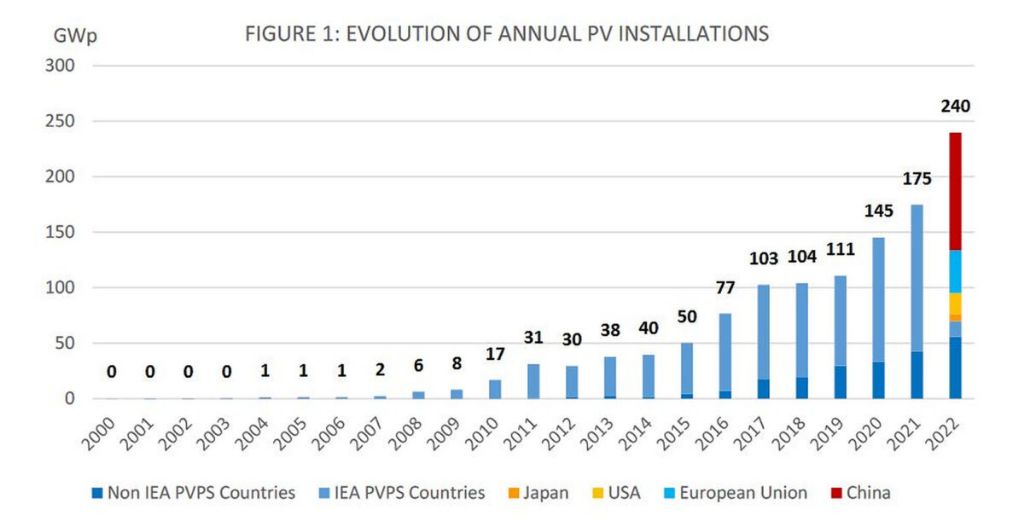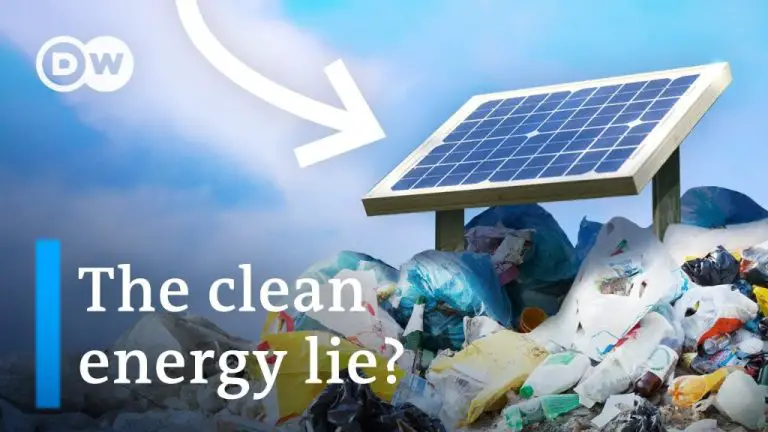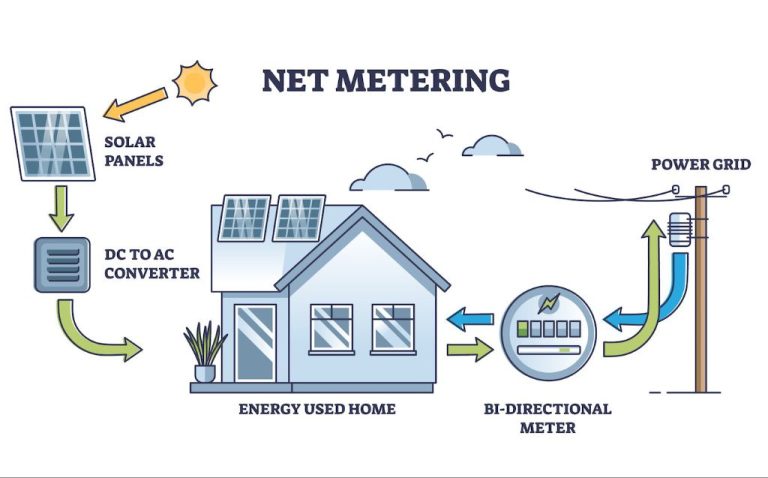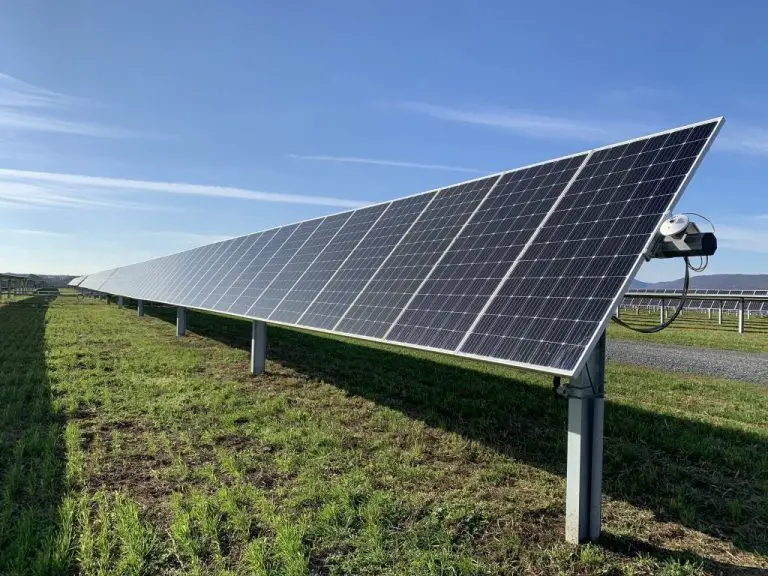What Is Solar Energy And How Does It Affect Earth?
What is Solar Energy?
Solar energy is radiant light and heat from the Sun that is harnessed using a range of technologies such as solar heating, photovoltaics, and concentrated solar power. Solar energy is considered a renewable energy source because the Sun will continue radiating light and heat for billions of years. Humans have harnessed solar energy for thousands of years, initially using passive solar design for heating and lighting homes. In the late 19th century, the first solar collectors were developed to produce steam for water pumps and machinery. The photovoltaic effect was discovered in 1839 by French physicist Edmund Becquerel, but the first solar cells capable of generating usable amounts of electricity were not developed until 1954 at Bell Labs. Since then, solar energy technologies have advanced tremendously, with solar panels becoming increasingly efficient and cost-effective. Today, solar energy provides a clean and sustainable source of power around the world.
How Solar Energy Works
Solar energy is harnessed in two main ways: through photovoltaic cells that convert sunlight directly into electricity, and through solar thermal systems that use mirrors or lenses to concentrate solar energy to heat water or another medium. The direct conversion of sunlight into electricity happens in photovoltaic cells or solar panels. When sunlight hits the photovoltaic cell, it excites the electrons in the cell and causes them to start flowing, generating an electric current (1). This process is known as the photovoltaic effect. The greater the intensity of sunlight that hits the cell, the more electricity that can be produced.
Solar thermal systems work a bit differently. They use mirrors or lenses to focus scattered sunlight onto a central point, significantly increasing its heat intensity. This concentrated solar power can then be used to heat water, generate steam to turn turbines and produce electricity, or power large-scale industrial processes. Some solar thermal systems include concentrators like parabolic troughs, solar power towers, and solar dishes (1).
(1) https://www.livescience.com/41995-how-do-solar-panels-work.html
Solar Energy and Climate Change
Solar energy plays an important role in mitigating climate change by reducing dependence on fossil fuels that emit greenhouse gases. According to the U.S. Department of Energy, solar power generation releases zero emissions that contribute to climate change or air pollution (https://www.energy.gov/eere/solar/solar-energy-wildlife-and-environment). In contrast, burning fossil fuels like coal and natural gas for electricity results in carbon dioxide emissions that trap heat in the atmosphere. The electric power sector represents 28% of all U.S. greenhouse gas emissions, so transitioning to renewable solar energy can significantly reduce emissions and combat climate change (https://www.seia.org/initiatives/climate-change).
While climate change could potentially lead to fewer sunny days in some regions, solar power remains a critical renewable energy source to mitigate greenhouse gas emissions globally. Research shows sustained investment in solar energy will be important despite regional climate impacts (https://www.princeton.edu/news/2020/10/07/climate-change-could-mean-fewer-sunny-days-hot-regions-banking-solar-power). Solar energy generation emits no greenhouse gases during operation, giving it a pivotal role in transitioning away from fossil fuels and reducing the impacts of climate change.
Environmental Impacts of Solar
Solar energy has several environmental impacts, both positive and negative. On the positive side, solar energy is a renewable and sustainable energy source that does not emit greenhouse gases or other air pollutants. Widespread adoption of solar could help mitigate climate change and improve air quality (AxiaSolarUSA, 2023).
However, there are some negative environmental impacts from solar, particularly related to land use, materials sourcing and disposal, and effects on wildlife habitats. Solar farms can take up significant land area, raising concerns about land degradation and loss of natural habitats. The manufacturing process for solar panels involves harmful chemicals and rare earth metals that must be responsibly sourced and disposed of. The reflective surfaces of solar arrays can also disrupt local wildlife behaviors and habitats (Kuby Energy, 2022).
Overall, experts recommend siting solar facilities away from high value conservation lands and wildlife corridors. Proper recycling and disposal of solar panels at end-of-life can mitigate waste impacts. With thoughtful policies and planning, solar’s benefits are believed to outweigh its costs (Kuby Energy, 2022).
Global Solar Energy Use
Solar energy capacity has grown rapidly in recent years. According to Top 10 Countries With Highest Installed Solar Capacity, the top countries for installed solar capacity in 2022 were:

- China – 324 GW
- United States – 100 GW
- Japan – 71 GW
- Germany – 59 GW
- India – 55 GW
China leads the world by a significant margin, with over 3 times more installed solar capacity than the United States in second place. India has also seen remarkable growth, rising to 5th place globally as the government has promoted solar adoption. The costs of solar have fallen dramatically in the past decade, making it increasingly competitive with fossil fuels for electricity generation around the world.
With solar energy becoming cheaper and more widespread, global solar capacity is expected to continue growing at a rapid pace. According to the IEA, global solar capacity could reach over 25,000 GW by 2050 under a sustainable development scenario. As more countries invest in solar power, renewable energy will play an increasingly important role in decarbonizing the global energy system.
Solar Energy Storage
As solar energy is generated intermittently depending on sunlight, storage methods are crucial for providing continuous power supply, especially when direct sunlight isn’t available. There are various ways solar energy can be stored for later use:
Batteries are one of the most common methods for storing solar energy. Excess electricity generated during the day can be stored in batteries and discharged when needed at night (1). Lithium-ion batteries in particular are well-suited for solar storage given their high energy density and efficiency. However, batteries can be expensive and have limited capacity.
Thermal energy storage allows heat from the sun to be captured and stored. This heat can then drive a turbine to generate electricity when needed. Sensible heat storage uses materials like molten salt to directly store heat, while latent heat storage relies on phase change materials (2). Thermal storage faces challenges with heat loss over time.
Storing solar energy is difficult given the intermittent nature of sunlight. Batteries can be costly and have capacity limits. Thermal storage also comes with heat loss challenges. Nonetheless, storage solutions are critical for harnessing solar energy around the clock.
(1) https://www.kcgreenenergy.com/blog/solar-energy-storage-methods-how-to-store-your-solar/
(2) http://ucsolar.ucmerced.edu/files/public/documents/Poster5.pdf
Benefits of Solar Energy
Solar energy is a clean, renewable source of power that does not produce any air or water pollution. Unlike fossil fuels, solar energy production does not emit greenhouse gases that contribute to climate change. Solar energy relies on the unlimited power of the sun, making it a sustainable energy source for the long-term compared to finite fossil fuels (Enel Green Power).
Solar energy systems can help reduce demand on the traditional electrical grid. Installing solar panels on homes and businesses allows them to generate their own electricity during daylight hours, reducing the amount of power they need to pull from utilities. This can lower stress on power plants and transmission lines (Constellation).
Once solar panels are installed, they require very little maintenance and have minimal operating costs. Fuel is not required to generate electricity from the sun. This allows solar power to provide decades of low-cost energy production after the initial system investment.
Limitations of Solar
While solar energy has many benefits, it also comes with some limitations. One of the main drawbacks of solar is the high upfront cost. Installing a residential solar system can cost anywhere from $10,000 to $25,000 depending on the size of the system and other factors (source: https://www.greenmatch.co.uk/blog/2014/08/5-advantages-and-5-disadvantages-of-solar-energy). Many homeowners find this initial price tag prohibitive. However, solar panels have become more affordable in recent years, and there are often tax credits and other incentives available to help offset costs. Over the lifetime of the system, solar can provide a return on investment through electricity bill savings.
Another limitation of solar energy is its intermittent power generation. Solar panels only produce electricity when the sun is shining. Output varies throughout the day and seasonally as the weather and solar irradiance levels change. Areas with limited sunlight during parts of the year will get less consistent solar power. Battery storage systems can help mitigate intermittency issues but add further expense (source: https://www.constellation.com/energy-101/energy-innovation/solar-energy-pros-and-cons.html). This drawback means solar may need to be paired with other power sources for 24/7 reliability.
Regions that are frequently cloudy or have large seasonal variation in daylight hours are not as well suited for solar energy. The amount of solar irradiance an area receives has a major impact on how much electricity solar panels can generate. Cooler climates tend to receive less sunlight overall compared to sunny, arid regions like the southwestern United States. Therefore, solar power’s viability can depend heavily on geographic location and regional climate.
Future of Solar Energy
The future prospects for solar energy growth look very promising. According to insights from Sisko Group, solar is projected to continue strong growth globally driven by declining costs and supportive government policies (Discover Solar Energy with Insights from Sisko Group). Key areas of innovation that will shape the future of solar include improving efficiency and developing energy storage solutions.
Improving the efficiency of solar photovoltaic panels will enable generating more electricity from the same amount of solar energy. Research is underway on advanced solar cell materials and technologies like perovskites that can potentially achieve higher efficiency at lower costs (U.S. is losing the solar race. Can big batteries help?). Developing energy storage systems can allow solar power generated during the day to be used at night. Large-scale battery storage projects are starting to be deployed alongside solar installations to enable dispatchable renewable energy.
Solar energy has the potential to meet a significant share of global electricity demand in the coming decades. According to projections, solar PV installations are estimated to reach over 4,500 gigawatts worldwide by 2050, meeting up to 20% of global electricity needs (The Pros and Cons of Rick Perry Influence on Solar Energy in the Trump Administration). With continuing advancements in solar technology and energy storage, solar can play a major role in the global transition to renewable energy.
Conclusion
As we have seen, solar energy is an abundant renewable energy source that can play a major role in powering our world in a sustainable way. Solar energy is clean, eco-friendly, and becoming increasingly cost-competitive with fossil fuels. While historically solar only accounted for a tiny fraction of global energy production, adoption has grown rapidly in recent years as costs have plummeted. With solar panels becoming more efficient and affordable every year, and new breakthroughs in solar energy storage, the future looks bright for solar to continue its growth trajectory. Widespread use of solar power will be key to reducing greenhouse gas emissions and mitigating climate change. There remain challenges around intermittency and storage that must be overcome for solar to reach extremely high levels of market penetration, but the diverse environmental and economic benefits make solar an essential component of our clean energy future.






